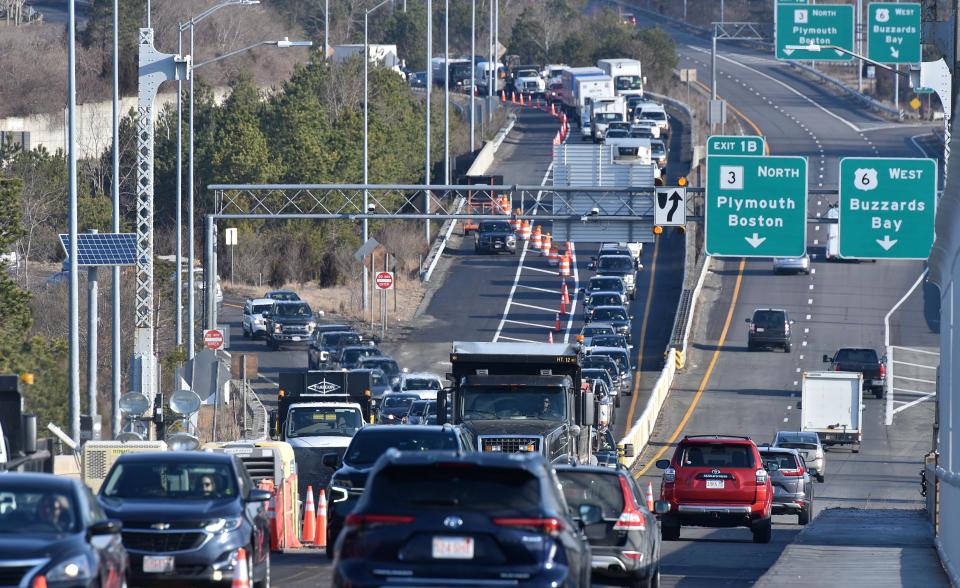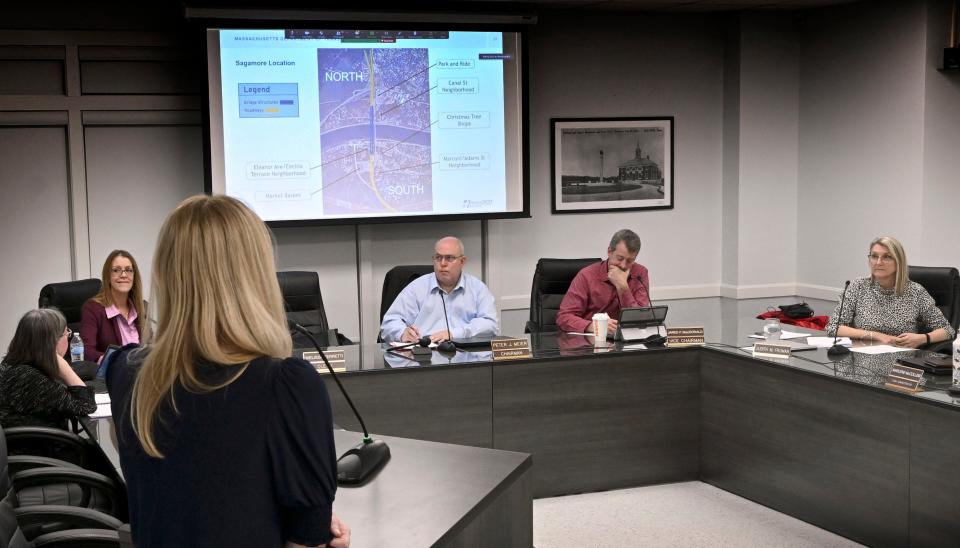Sagamore saga: What will roads and terrain look like when $4B bridge replacement happens
State transportation officials still do not know how the Cape Cod Canal bridge replacements will touch surrounding neighborhoods in terms of property takings.
The state Department of Transportation hosted a public Zoom session Wednesday evening to discuss possible roadway alternatives surrounding the proposed new Sagamore Bridge and to field questions.
"What I'm hearing is people worried about bike paths, worried about yada yada, I'm worried about my property and whether or not it's going to become an access road or an entrance or an exit," Bourne resident Andrea Lamb, who lives near the Sagamore Bridge, said during the meeting.

Jill McLaughlin, a civil engineer with engineering company Stantec, which is working on the project, said the team does not yet "know the extent of the impacts and that's something that we continue to evaluate."
MassDOT representatives walked through several different scenarios, including highway extensions, shared use path for bikers and pedestrians, and ramp changes. One idea calls for moving the Route 6 westbound on-ramp away from the Christmas Tree Shops so the ramp would instead come off the Mid-Cape Connector.
"One thing that we see with the current design is that the geometry is tight, making turn movements out of the Christmas Tree Shop area difficult, especially for larger vehicles. With this reconfiguration, we are able to provide better turn movements in areas for vehicles to turn in and out of that area," said McLaughlin.

At this time, all options are conceptual and no final design has been selected yet.
In January, officials decided twin arches are the right route because they would get traffic off the existing bridges the fastest. The design, which features separate bridges, side by side, for each direction of traffic, is also the easier to build, the least expensive and has only a marginally wider footprint in the final condition than a single wider bridge, they said.
State engineer says two bridges to the Cape will be kept open during construction
When asked if all on- and off-Cape traffic will be required to cross on one existing bridge, MassDOT lead engineer John Smith said no, saying it's why the state is building new twin bridges adjacent to the existing bridge.
Previous coverage: Sagamore, Bourne bridges have brought prosperity, loyalty and now worries to Cape Cod
"A lot of times when people think about the project, they are fearful that maybe we would just take one bridge out of service and rebuild it and then take the other bridge out of service which would only leave one existing bridge to take all traffic...there will never be a time when we'll be depending on one or the other of the existing bridges to carry all traffic," said Smith. "There will always be two lanes in each direction at each crossing."
The Sagamore and Bourne bridges cross the Cape Cod Canal. They are both in the town of Bourne, and provide the primary vehicular link between the mainland and Cape Cod.
Estimates for the two-bridge project have risen to around $4 billion. Construction could begin in 2026.
The U.S. Army Corps of Engineers, which owns and maintains the bridges, has learned funding will not be awarded under the 2022 Infrastructure for Rebuilding America, Mega grant program and Large Bridge Program under the Bridge Investment Program, said Cordeiro. The Army Corps and the state transportation department plan to pursue Infrastructure Investment and Jobs Act funding for the fiscal 2023 round of notice of funding opportunity.
Earlier this month, President Joe Biden announced the inclusion of an initial $350 million for the replacement of both bridges in his fiscal 2024 federal budget.
That $350 million would be encompassed in an overall commitment of $600 million along with a legislative proposal to allow the Army Corps to transfer those funds and ownership of the bridges to the state, which would be responsible for future operation and maintenance.
On March 22, MassDOT hosted a meeting that discussed roadway alternatives surrounding the Bourne Bridge. One possibility would see the Bourne Rotary eliminated.
State transportation managers said that they plan to file this spring an environmental notification form for replacement of the Cape Cod Canal bridges.
The form details anticipated environmental impacts and triggers a Massachusetts Environmental Policy Act review. State officials say the information is scheduled to be published in the Environmental Monitor — a biweekly publication that gives notice of new projects submitted to the Environmental Policy Act office for review — on May 10.
Zane Razzaq writes about housing and real estate. Reach her at zrazzaq@capecodonline.com. Follow her on Twitter @zanerazz.
Get the Cape Cod news that matters delivered to your inbox. Sign up for our free newsletters.
This article originally appeared on Cape Cod Times: Road changes, land-takings still up in the air in Cape bridge project

